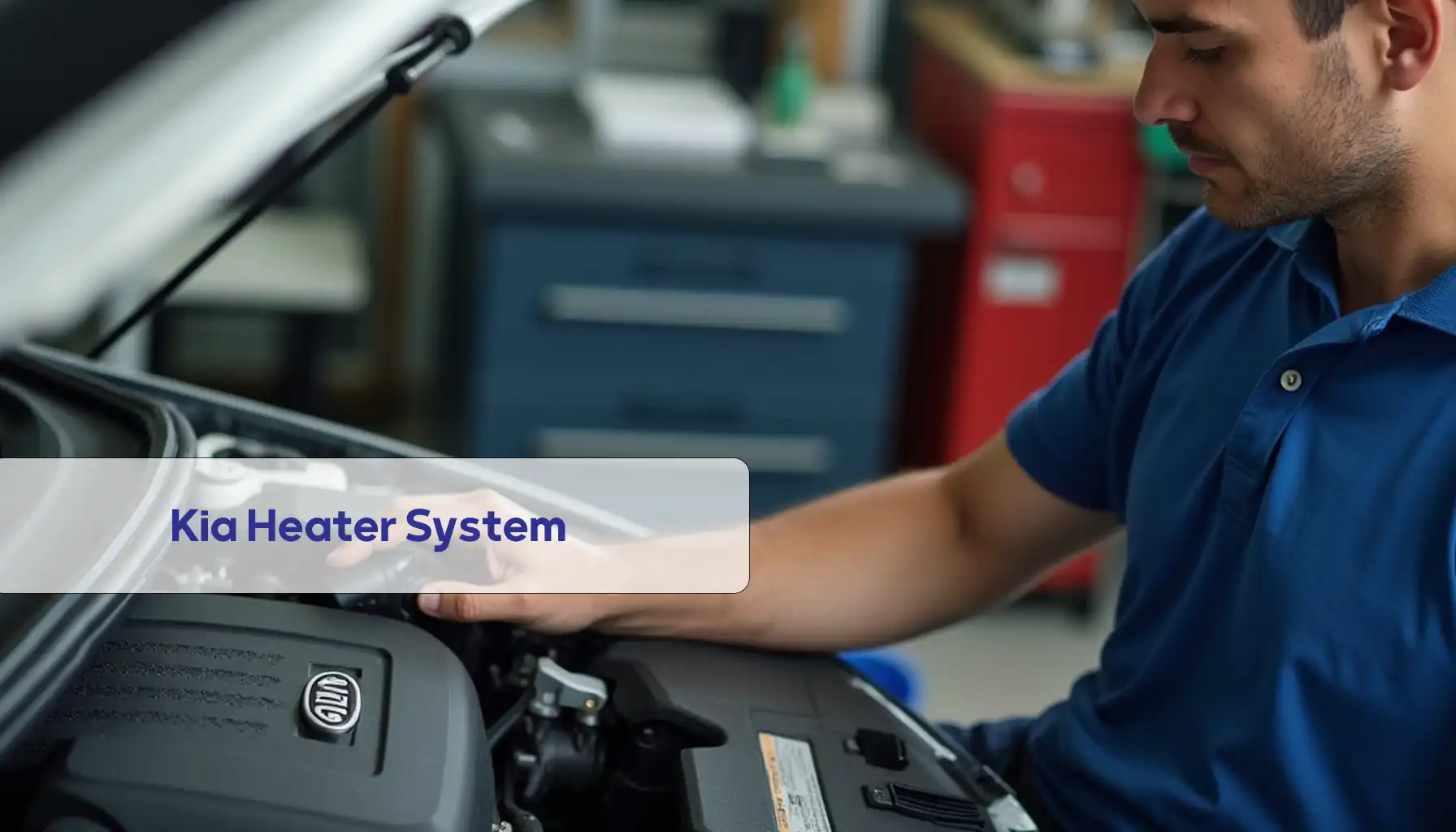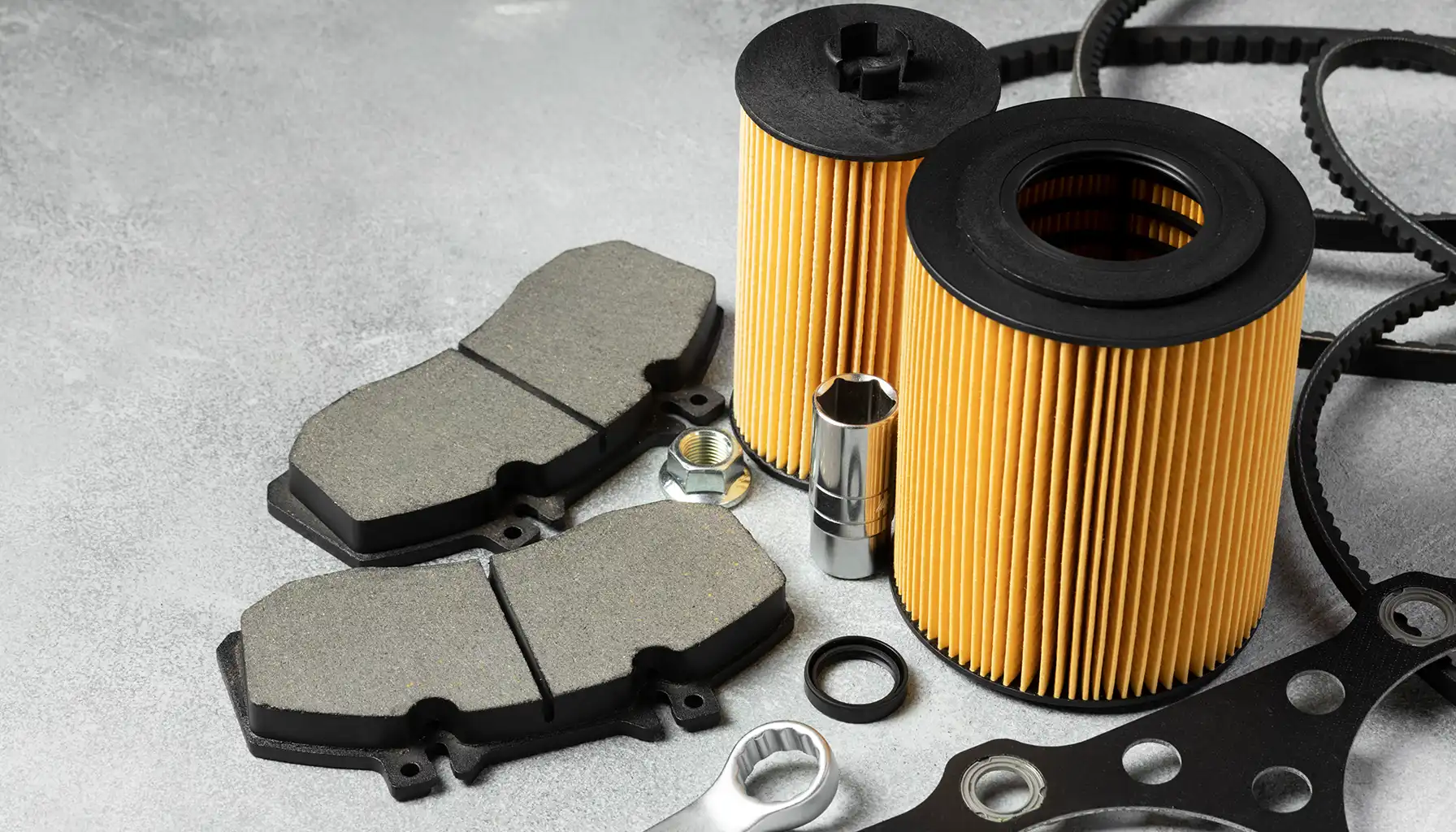The crankshaft position sensor, also known as the Engine Speed Sensor (ESS), is a Electrical System Parts of a vehicle which is responsible for calculating and transmitting location information related to the piston and the rotational speed of the crankshaft.
The engine and crankshaft are among the most crucial parts of any vehicle, and any defects or issues in these components can cause significant problems. Therefore, multiple sensors are used to monitor the engine’s performance.

As its name suggests, the crankshaft position sensor monitors the moving parts of the engine, including the crankshaft, engine valves, and pistons. The information this sensor sends to the ECU (Engine Control Unit) affects the timing of fuel usage and enhances the vehicle’s efficiency.
What is a Crankshaft Position Sensor?
The crankshaft position sensor, also known as the Engine Speed Sensor (ESS), is responsible for calculating and transmitting location information related to the piston and the rotational speed of the crankshaft.
The engine and crankshaft are among the most crucial parts of any vehicle, and any defects or issues in these components can cause significant problems. Therefore, multiple sensors are used to monitor the engine’s performance.
” For more information, we recommend read How Crankshaft Sensor Controls the Spark? “
As its name suggests, the crankshaft position sensor monitors the moving parts of the engine, including the crankshaft, engine valves, and pistons. The information this sensor sends to the ECU (Engine Control Unit) affects the timing of fuel usage and enhances the vehicle’s efficiency.
How the Crankshaft Position Sensor Works
Typically, the crankshaft position sensor is located at the front of the engine’s spare parts near the crankshaft pulley. However, in some vehicles, this sensor is positioned at the rear of the engine on the clutch housing near the flywheel. Additionally, in certain fuel-injected vehicles with a distributor (like the Pride), the sensor is located inside the distributor.

This spare part continuously monitors the status of the crankshaft and sends information to the ECU (Engine Control Unit) to help control fuel injection and engine ignition.
The sensor is positioned such that the teeth of the reluctor ring attached to the crankshaft pass close to the sensor tip. The reluctor ring has several teeth that report the crankshaft’s position to the Powertrain Control Module (PCM).
As the crankshaft rotates, the sensor generates a pulsed voltage signal, with each pulse corresponding to one of the teeth on the reluctor ring. The PCM uses the signal from the crankshaft position sensor to determine the timing of the spark in the cylinders.
The signals received from the sensors accurately indicate the condition of the cylinders and potential failures.
Crankshaft Position Sensor functions
Crankshaft position sensors play a crucial role in the operation of internal combustion engines by measuring the speed and position of the crankshaft:
- Reporting the movement of the flywheel to the ECU: which occurs due to starting or pushing the vehicle.
- Determining the top dead center for the ECU: to trigger fuel injection by the injector and spark generation.
- Reporting engine speed: Crankshaft reports engine speed to the tachometer via the ECU.
- Calculating spark timing: adjusting engine speed, and detecting engine mode.
This data is essential for the control unit to accurately calculate the timing of fuel injection and ignition. These sensors are typically positioned near the flywheel ring gear, allowing them to monitor the rotational movement of the crankshaft.
Types of Crankshaft Sensors
There are two primary designs of crankshaft position sensors: inductive sensors and Hall generators. Each type serves the purpose of providing the control unit with the necessary signals to calculate the crankshaft’s speed and position. Before testing a crankshaft sensor, it is important to determine which type of transmitter is being used, as this information is vital for accurate diagnosis and maintenance.
Enhancing Engine Performance
The signals generated by crankshaft position sensors are instrumental in providing the control unit with essential data for optimizing engine performance. By accurately determining the speed and position of the crankshaft, these sensors contribute to the precise timing of fuel injection and ignition, ultimately enhancing the overall functionality of the engine.
By rephrasing and expanding upon the original content, we have highlighted the significance of crankshaft position sensors in engine function and emphasized the importance of understanding their role in optimizing engine performance.

Introduction to Types of Crankshaft Position Sensors
Generally, there are two types of crankshaft sensors used in Hyundai and KIA vehicles:
- Magnetic sensors with an A/C voltage collector coil, featuring a two-pin connector.
- Hall effect sensors with a digital square wave signal, featuring a three-pin connector.
Signs of a Faulty Crankshaft Position Sensor
A malfunctioning crankshaft position sensor can cause several issues, indicating a problem with the sensor:
- If the sensor is faulty, the vehicle will not start because the necessary signal is not sent to the ECU for fuel injection and ignition.
- The engine speed may not be displayed correctly when the car is running.
- The fuel pump may cut off during the vehicle’s startup.
- The cut-off mode may activate before the engine speed reaches the red line.
- The tachometer may remain at a constant engine speed or experience sudden jumps.
- One common sign of a faulty crankshaft position sensor is the illumination of the check engine light.
- If the engine runs slowly or misfires, the crankshaft position sensor is likely failing. In such cases, it is advisable to repair the sensor promptly to prevent serious engine damage.
- Variable acceleration of the vehicle can also indicate an issue with the crankshaft position sensor.
In vehicles equipped with camshaft sensors, if the crankshaft position sensor is faulty, the vehicle may start, but the engine speed will not exceed 3.5 to 4.5 RPM.
Signs of a Faulty Crankshaft Position Sensor
- Engine Vibration: When the crankshaft position sensor fails, the engine control unit may not manage the crankshaft properly, leading to noticeable vibrations. In severe cases, these vibrations can be felt through the steering wheel.
- Check Engine Light: One of the primary indicators of a crankshaft position sensor failure is the illumination of the check engine light on the dashboard, often accompanied by error codes P0336 and P0335.
- Reduced Engine Performance: A faulty crankshaft position sensor can prevent the engine control unit from accurately determining the crankshaft and cylinder positions, resulting in decreased engine efficiency.
- Cylinder Misfire: A malfunctioning crankshaft position sensor can cause incomplete combustion in one or more cylinders due to the sensor’s inability to correctly inform the engine control unit of the piston’s position.
- Difficulty Starting the Vehicle: If the crankshaft position sensor is defective, starting the vehicle can become challenging. In some cases, the vehicle may not start at all.
- Engine Stalling: If the engine suddenly stalls while driving, it is crucial to visit a mechanic immediately to repair or replace the crankshaft position sensor. Ignoring this issue can lead to complete engine failure and significant repair costs.
Repairing the Crankshaft Position Sensor
In some vehicles that use inductive (magnetic) sensors, these sensors rarely fail due to their simple construction, which includes a magnet, an iron core, and an inductive coil, making them highly durable.
However, because they are located above the flywheel, they can sometimes be affected by iron filings, grease, or oil, which can impair their function.

To repair the crankshaft position sensor, first disconnect the battery power, then remove the sensor from its position and clean its tip of any iron filings and oil. If the problem persists after cleaning, it is advisable to replace the sensor.
How to Check the Health of the Crankshaft Position Sensor
To check the sensor’s health, connect its two terminals to an ohmmeter. If the displayed resistance is either below or above the standard range, the sensor is faulty and should be replaced.
It is recommended to consult a specialist mechanic to diagnose the health of the crankshaft position sensor and have your vehicle inspected by a professional repair shop.
Should You Continue Driving with a Faulty Crankshaft Position Sensor?
If the crankshaft position sensor is faulty, driving short distances may not cause significant issues. However, it is best to repair, clean, or replace it as soon as possible to prevent damage to the engine.
The cost of a crankshaft position sensor is not high, and it is relatively inexpensive. Therefore, if it is not functioning properly, replace it promptly to avoid incurring higher costs for your vehicle. When replacing sensors and electrical components in vehicles, always disconnect the battery to prevent damage to other electronic devices and the ECU.
Final Thoughts
In the latest generation of vehicles, various sensors are used to control different parts of the engine. The crankshaft position sensor is responsible for detecting the position of the piston and the rotational speed of the crankshaft, sending this information to the vehicle’s computer. This ensures optimal performance by adjusting ignition timing and combustion.

The importance of this sensor is such that a technical fault can prevent the vehicle from starting. Cleaning or timely replacement of the sensor can prevent serious engine damage. When purchasing a crankshaft position sensor and other electronic automotive components, make sure to choose reputable stores that offer quality guarantees on their products.



